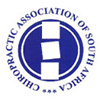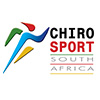Services
What can a Chiro help you with:
- Neck pain and stiffness,
- Upper and lower back pain,
- Pinched nerves,
- Slipped discs,
- Pain, numbness or burning down the arms or legs,
- Pregnancy related back pain,
- Sciatica,
- Whiplash,
- Headaches,
- Hip/pelvis misalignment,
- Postural correction
- We do also treat babies and children.
How many sessions will I need
This is a question asked by majority of patients and simply: it is dependent on the condition that you present with.
The initial session will be there to establish what the disorder is and if it is a chiropractic case or if referral is required. I will then discuss with the patient what sort of treatment plan will be followed. Most treatment plans are three sessions after initial consult and then a subjective as well as objective reassessment of the patient’s condition and pain. This will determine if the treatment is having an effect on the condition or if the patient needs to seek other treatment that the chiropractor will be able to advise on and refer.
Chiropractors have an extensive knowledge in diagnostics but remain doctors of chiropractic and should use their professional knowledge when determining if a patient needs to be referred on to a specialist in another field of expertise.
What happens during a visit to a chiropractor?
The first visit usually lasts about an hour.
In this session we take a complete health history, including information on past injuries and illnesses, current conditions and medications, lifestyle, diet, sleep habits, exercise, mental stresses, and use of alcohol, drugs, or tobacco. During a physical exam, we evaluate your spine and joints and may perform diagnostic tests, such as blood pressure, x-rays, MRIs, and other tests to make a diagnosis. Treatment usually starts on the first visit unless the chiropractor decides that special investigations into the condition need to be carried out before treatment. Patients are typically asked to lie on a specially designed table, where the chiropractor does the spinal manipulations. The most common is manual manipulation, where the chiropractor moves a joint to the end of its range, then applies a low force thrust. The chiropractor may also use other treatments, including massage and heat and ice therapies. You should not feel any pain from the manipulation. Some people have minor aches, stiffness, and tiredness for a few days after the manipulation while their body adjusts to the new alignment.
The Follow up treatment
The follow-up treatment will be approximately 20-30 minutes long and will begin with a discussion on your response to the treatment plan. All the basic paper work would have been done on your first visit.
This will once again be followed by the appropriate treatment specific to you as an individual and your condition, we are all designed differently and live our lives and experiences very differently. Therefore no two patients respond the same way and no two patients are treated in the same way after all we are not robots.
A number of follow-up consultations may be required to achieve the required recovery goals including a reduction in pain and inflammation, improvement in functionality and quality of life however this will be dependent on the nature of your condition and your response to the treatment plan.
Current rates for chiropractic consultation for 2019 are as follows
Adults:
- First consultation R640.
- Follow ups R580.
Children under the age of 14:
- First consultation R580.
- Follow ups R530.
Please note that this is a cash based practice and you will be require to pay via cash, or card. American express and Diners are also accepted along with Visa and MasterCard credit or debit cards.
Our rates are based on Discovery Medical Scheme healthcare provider rates. And you just need to submit your invoice into your medical aid for reimbursement.
[widgetkit id=63]


